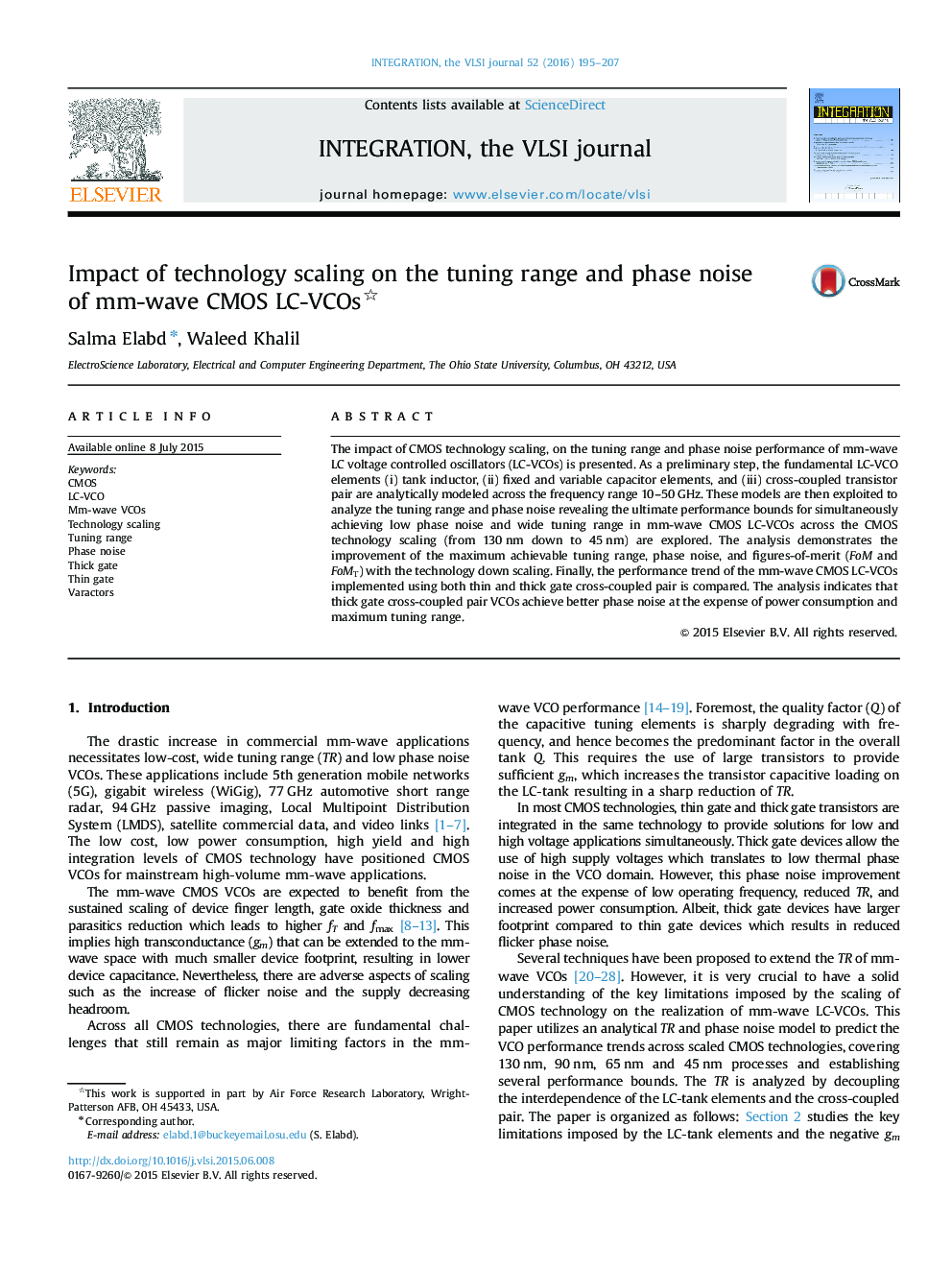| Article ID | Journal | Published Year | Pages | File Type |
|---|---|---|---|---|
| 542656 | Integration, the VLSI Journal | 2016 | 13 Pages |
•Motivations and challenges of mm-wave CMOS LC-VCOs.•Study of the limitations imposed by the LC-VCO elements across the CMOS processes.•Tuning range quantitative analysis and minimum bounds for phase noise, FoM, FoMT.•Comparing thin and thick gate cross-coupled pairs LC-VCOs across the CMOS nodes.
The impact of CMOS technology scaling, on the tuning range and phase noise performance of mm-wave LC voltage controlled oscillators (LC-VCOs) is presented. As a preliminary step, the fundamental LC-VCO elements (i) tank inductor, (ii) fixed and variable capacitor elements, and (iii) cross-coupled transistor pair are analytically modeled across the frequency range 10–50 GHz. These models are then exploited to analyze the tuning range and phase noise revealing the ultimate performance bounds for simultaneously achieving low phase noise and wide tuning range in mm-wave CMOS LC-VCOs across the CMOS technology scaling (from 130 nm down to 45 nm) are explored. The analysis demonstrates the improvement of the maximum achievable tuning range, phase noise, and figures-of-merit (FoM and FoMT) with the technology down scaling. Finally, the performance trend of the mm-wave CMOS LC-VCOs implemented using both thin and thick gate cross-coupled pair is compared. The analysis indicates that thick gate cross-coupled pair VCOs achieve better phase noise at the expense of power consumption and maximum tuning range.
